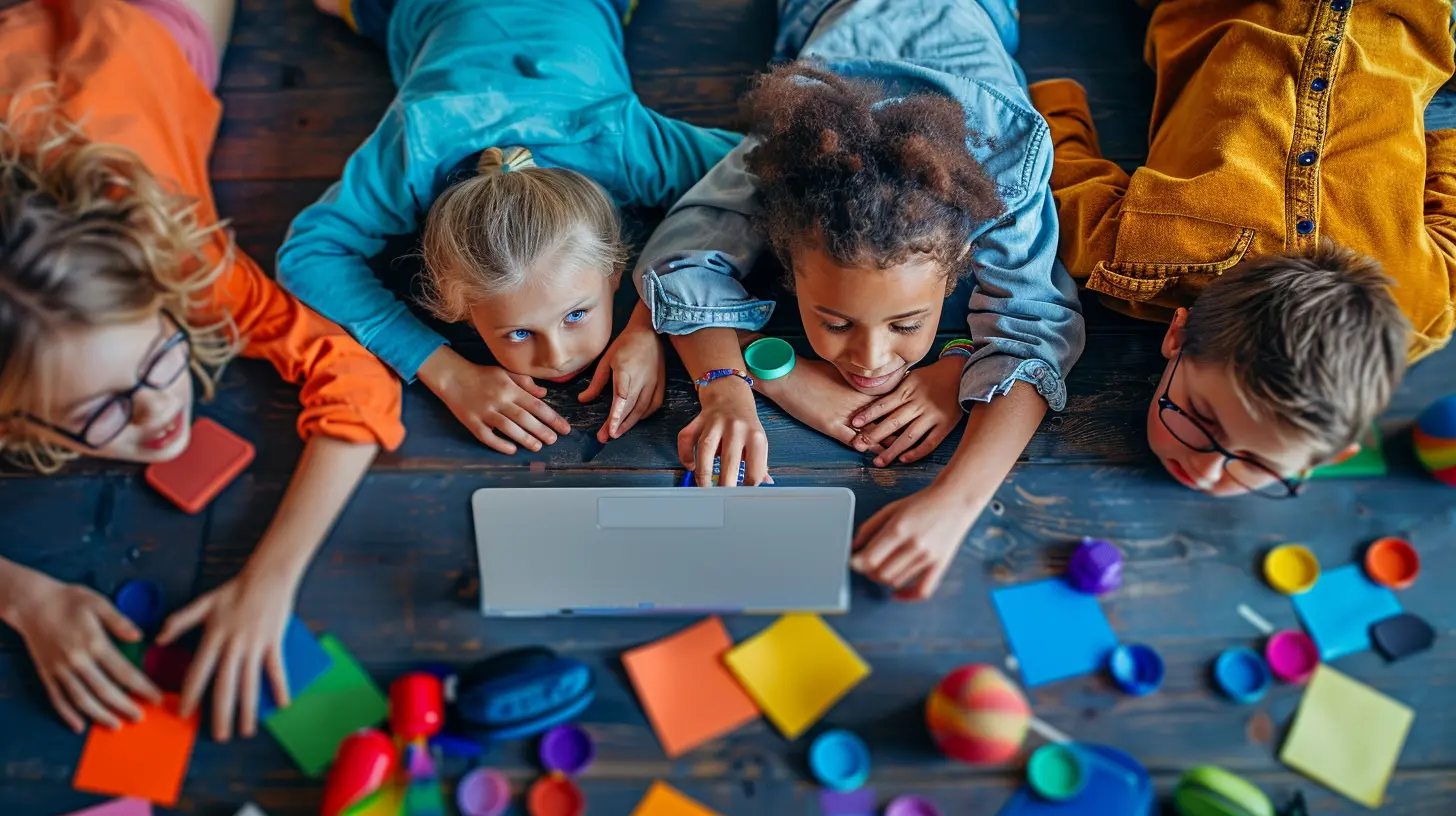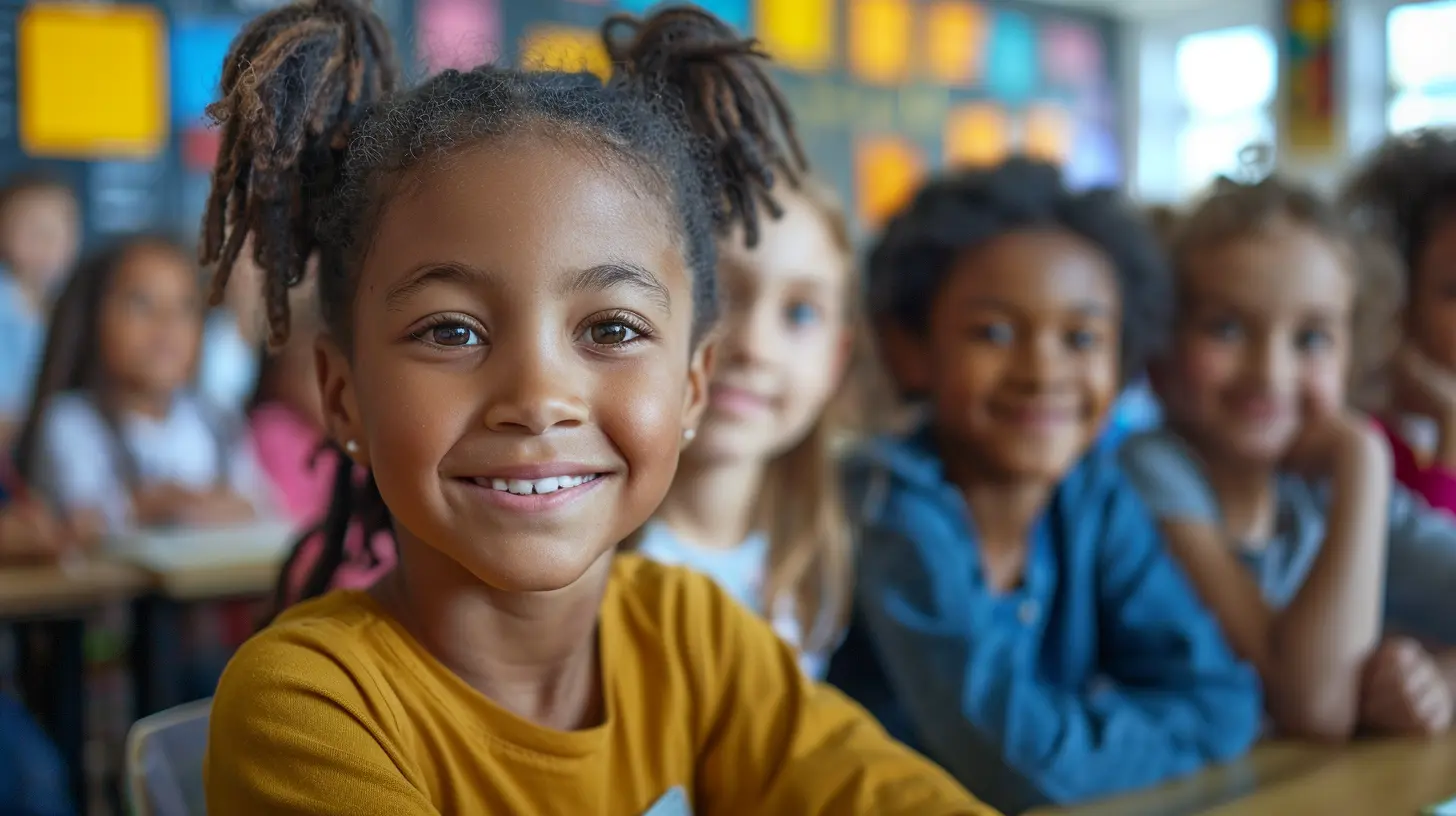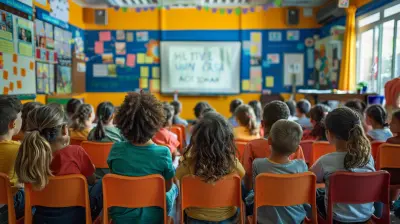How to Create a Student-Centered Blended Learning Environment
4 March 2025
In today's ever-evolving educational landscape, the concept of "blended learning" has become a buzzword. But what does it really mean to create a student-centered blended learning environment? How can educators incorporate technology, hands-on learning, and student agency into a cohesive learning experience?
Let's dive into the nitty-gritty of what a student-centered blended learning environment is, how to implement it, and why it's essential for modern education.

What is a Student-Centered Blended Learning Environment?
Before we get into the "how," let's clarify the "what." A blended learning environment combines traditional face-to-face instruction with digital tools and online learning, giving students the flexibility to learn in different ways.On the other hand, a student-centered learning environment is one where the focus shifts from the teacher to the student. Instead of being passive recipients of information, students take an active role in their learning journey. They make decisions, collaborate with peers, and engage in problem-solving tasks that allow them to apply what they've learned.
So, a student-centered blended learning environment marries these two concepts. It’s all about creating a learning space where students have control over the pace, path, and sometimes even the place of their learning.
Why a Student-Centered Blended Learning Model?
The traditional classroom model isn't always conducive to the diverse ways students learn. Some students flourish with face-to-face instruction, while others thrive in an online setting. A blended learning model caters to different learning styles and needs. So, why not create a system that puts students in the driver’s seat?Think of it this way: Imagine you're a chef cooking a meal for 30 people. Each person has different dietary needs, preferences, and tastes. You wouldn't serve the same dish to everyone, would you? Similarly, a one-size-fits-all approach to education doesn't work. A student-centered blended learning environment allows for more personalized instruction, giving each student the "meal" they need to succeed.

Key Elements of a Student-Centered Blended Learning Environment
Creating a student-centered blended learning environment isn't just about throwing in some technology and calling it a day. There are several key elements that come into play to make it truly effective.1. Personalization
Personalization is at the core of any student-centered approach. In a blended learning environment, this means allowing students to learn at their own pace and in a manner that suits them. For some, this might mean diving into online resources, while others may benefit from more face-to-face interaction.How to Implement Personalization:
- Differentiated Instruction: Tailor lessons and assignments to different skill levels. Use technology to offer various pathways for students to explore the material.- Student Choice: Allow students to choose how they demonstrate their understanding of a topic. For example, some students may opt to write an essay, while others might create a video or presentation.
- Adaptive Learning Technologies: Consider using tools like Khan Academy or Google Classroom that adapt to students' performance, offering them content suited to their progress level.
2. Flexibility
Flexibility in a student-centered blended learning environment is about providing options—whether it's the pace, place, or method of instruction.How to Implement Flexibility:
- Flipped Classroom Model: In this model, students review materials (like videos or readings) at home, freeing up classroom time for project-based learning or deeper discussions.- Flexible Scheduling: This could mean giving students the option to engage with certain lessons online at their own time or during set "learning blocks" in class.
- Online and Offline Balance: Not every activity has to be digital. Ensure there's a healthy mix of online resources and hands-on tasks to engage different types of learners.
3. Student Agency
A student-centered approach must give students the opportunity to make decisions about their learning. When students have a say in what, how, and when they learn, they feel more engaged and motivated.How to Implement Student Agency:
- Goal Setting: Encourage students to set personal learning goals. Help them track their progress and reflect on their growth.- Choice Boards: Offer students a range of activities or topics, allowing them to choose which they’d like to explore further.
- Project-Based Learning (PBL): Introduce projects that give students the chance to dive deep into a topic of their choice. PBL encourages critical thinking, creativity, and problem-solving.
4. Collaboration
Collaboration plays a significant role in a student-centered blended learning environment. Students learn best when they're able to interact with their peers, share ideas, and work together to solve problems.How to Implement Collaboration:
- Peer Review: Set up structured peer-review sessions where students can provide feedback on each other's work.- Group Projects: Use collaborative tools like Google Docs or Microsoft Teams to facilitate group work, even outside the classroom.
- Discussion Forums: Create online spaces where students can engage in meaningful discussions about class topics, share resources, and ask questions.
5. Continuous Assessment
In a traditional classroom, assessments are often limited to a few big tests or assignments. In a student-centered blended learning environment, assessment is ongoing and varied.How to Implement Continuous Assessment:
- Formative Assessments: Use quick quizzes, polls, or exit tickets to gauge student understanding in real time.- Self-Assessment: Encourage students to reflect on their own learning through journals or digital portfolios.
- Peer Assessment: Involve students in assessing each other’s work, fostering a collaborative atmosphere and deepening their understanding of the material.

Steps to Create a Student-Centered Blended Learning Environment
Now that we've covered the essential elements, let's talk about how to bring it all together. Below is a step-by-step guide to creating a student-centered blended learning environment.Step 1: Assess Your Current Teaching Methods
Before you can implement a new approach, you need to understand where you're starting. What aspects of your current teaching model are working, and which ones could use improvement? Take stock of how much control students currently have over their learning and how technology is being used in your classroom.Step 2: Choose the Right Blend of Technology
Not all technology is created equal. You don’t want to overwhelm students with too many tools, but you also want to pick platforms that enhance the learning experience.Some great tools to consider include:
- Learning Management Systems (LMS): Platforms like Google Classroom or Canvas that allow you to organize materials, assignments, and grades in one place.
- Video Lessons: Tools like Edpuzzle or Khan Academy allow students to watch videos at their own pace.
- Interactive Tools: Apps like Quizlet, Kahoot!, or Nearpod engage students with interactive quizzes and activities.
Step 3: Design Flexible Learning Pathways
Once you’ve chosen your tech, it’s time to build learning pathways that cater to different student needs. Start by designing lessons that can be accessed in multiple ways—whether that’s through videos, readings, or hands-on activities.Create a roadmap for students with clear milestones but allow them to choose how they get there. Just like hiking a mountain, some might opt for the more challenging path, while others stick to the easier route. Either way, they’re all heading toward the same goal.
Step 4: Foster a Supportive Learning Community
Building a community is key. Ensure that students feel supported throughout their learning journey. This can be done by:- Regular Check-ins: Whether it’s through face-to-face meetings or online feedback, make sure students know you’re there to help.
- Peer Support: Encourage students to work together and support one another. This can be done through group projects, peer review sessions, or even study groups.
Step 5: Evaluate and Adjust
It’s important to remember that creating a student-centered blended learning environment is not a one-and-done deal. It requires continuous evaluation and adjustment. Keep an eye on what’s working and what’s not, and don’t be afraid to make changes as needed.Ask for feedback from students, and be open to their suggestions. After all, the goal is to create an environment that works best for them!

The Benefits of a Student-Centered Blended Learning Environment
So, why go through all the effort of creating this type of learning environment? Here are some of the key benefits:- Increased Engagement: When students have control over their learning, they are more likely to be engaged and motivated.
- Flexibility: A blended learning environment offers flexibility, allowing students to learn in a way that works best for them.
- Personalization: With a student-centered approach, learning can be tailored to the individual needs of each student.
- 21st Century Skills: This model promotes critical thinking, collaboration, and self-management—essential skills for the future workforce.
Final Thoughts
Creating a student-centered blended learning environment can seem daunting at first, but the rewards are well worth the effort. By focusing on personalization, flexibility, student agency, collaboration, and continuous assessment, you can create a learning space that not only meets the needs of all students but also empowers them to take control of their education.Remember, this isn’t about replacing the teacher—it’s about transforming the teacher’s role from the "sage on the stage" to the "guide on the side." When students are at the center of their learning, they become more engaged, motivated, and capable of reaching their full potential.
all images in this post were generated using AI tools
Category:
Blended LearningAuthor:

Bethany Hudson
Discussion
rate this article
15 comments
Thalwen McFarlane
This article brilliantly outlines the essentials of fostering a student-centered blended learning environment. By emphasizing active engagement, personalized learning paths, and effective use of technology, educators can create a dynamic atmosphere that caters to diverse student needs. Implementing these strategies can significantly enhance both student motivation and academic success. Great insights!
March 29, 2025 at 5:19 AM

Bethany Hudson
Thank you for your thoughtful feedback! I'm glad you found the article helpful in highlighting key strategies for fostering a student-centered blended learning environment. Your support is much appreciated!
Skyler Baker
This article is a fantastic guide to fostering a vibrant, student-centered blended learning environment! Embrace these tips to inspire creativity and engagement in your classroom!
March 28, 2025 at 9:42 PM

Bethany Hudson
Thank you for your kind words! I'm glad you found the tips valuable for fostering creativity and engagement in the classroom.
Zevros McNulty
This article effectively highlights key strategies for fostering a student-centered blended learning environment. By emphasizing collaboration, personalization, and the integration of technology, educators can enhance engagement and support diverse learning needs, ultimately empowering students to take ownership of their educational journey.
March 28, 2025 at 4:59 AM

Bethany Hudson
Thank you for your insightful comment! I'm glad you found the strategies valuable in promoting a student-centered approach to blended learning.
Aurelia Diaz
In a world where learners soar, Blend the old with the new, Curate spaces that invite, Engagement blooms like morning dew. With voices heard and choices made, A tapestry of minds displayed, In student-centered realms, we find, The heart of learning intertwined.
March 27, 2025 at 8:47 PM

Bethany Hudson
Thank you for beautifully capturing the essence of a student-centered blended learning environment! Your words highlight the importance of nurturing engagement and collaboration, which are essential for fostering meaningful learning experiences.
Merida McKibben
Creating a student-centered blended learning environment hinges on fostering autonomy and collaboration. By integrating technology thoughtfully and allowing students to engage with diverse resources, educators can enhance motivation and personalized learning experiences. This approach empowers students to take ownership of their educational journey effectively.
March 27, 2025 at 4:32 AM

Bethany Hudson
Thank you for highlighting the importance of autonomy and collaboration in blended learning! Your insights on integrating technology and diverse resources are vital for empowering students and enhancing their learning experiences.
Regina Love
This article offers valuable strategies to empower students in a blended learning setting, fostering engagement and collaboration while catering to diverse learning styles effectively.
March 25, 2025 at 11:57 AM

Bethany Hudson
Thank you for your positive feedback! I'm glad you found the strategies valuable for fostering engagement and collaboration in a blended learning environment.
Mandy Hensley
Empowering students makes learning so much more enjoyable!
March 24, 2025 at 8:18 PM

Bethany Hudson
Absolutely! Empowering students fosters engagement and enthusiasm, making the learning experience more enjoyable and effective. Thank you for your insight!
Lark Pruitt
This article effectively outlines strategies for fostering a student-centered blended learning environment. By incorporating personalized learning paths and leveraging technology, educators can enhance student engagement and autonomy, creating a more dynamic and effective classroom experience. A must-read for innovative teachers!
March 17, 2025 at 9:04 PM

Bethany Hudson
Thank you for your thoughtful feedback! I'm glad you found the article informative and valuable for fostering student engagement in blended learning.
Iliana McVey
Empower students with choices to foster engagement and ownership.
March 16, 2025 at 12:26 PM

Bethany Hudson
Absolutely! Giving students choices boosts their engagement and sense of ownership, making the learning experience more meaningful and tailored to their interests.
Elowen McCord
Empower students for true engagement!
March 15, 2025 at 1:52 PM

Bethany Hudson
Absolutely! Empowering students is key to fostering genuine engagement in a blended learning environment.
Phoebe McClintock
This article effectively outlines strategies for fostering a student-centered blended learning environment. By emphasizing flexibility, engagement, and personalization, it empowers educators to meet diverse learning needs. Incorporating technology as a facilitator rather than a barrier enhances interaction and collaboration, ultimately driving student motivation and success in a hybrid educational landscape.
March 14, 2025 at 4:04 AM

Bethany Hudson
Thank you for your insightful comment! I'm glad you found the strategies for fostering a student-centered blended learning environment effective. Your emphasis on flexibility and technology as facilitators really resonates with the core message of the article.
Summer McMahon
Thank you for sharing this insightful article on creating a student-centered blended learning environment. The strategies you've outlined not only foster engagement but also empower students to take ownership of their learning. I appreciate the practical tips and look forward to implementing these ideas in my own teaching practice!
March 12, 2025 at 9:02 PM

Bethany Hudson
Thank you for your kind words! I'm glad you found the article helpful and I'm excited for you to implement the strategies in your teaching. Best of luck!
Lennox Schultz
Empowering students fosters engagement and success!
March 7, 2025 at 5:32 AM

Bethany Hudson
Absolutely! Empowering students is key to enhancing engagement and driving success in a blended learning environment.
Maggie Lopez
Creating a student-centered blended learning environment is vital for fostering engagement and success. Your insights highlight the importance of adaptability and understanding student needs. By prioritizing their voices and experiences, we can empower learners to thrive in an enriching and supportive educational space. Thank you for sharing these valuable strategies!
March 5, 2025 at 1:49 PM

Bethany Hudson
Thank you for your thoughtful comment! I'm glad you found the strategies valuable for fostering engagement and empowering students in a blended learning environment.
Nicole McVicar
Embrace the chaos of student-centered blended learning! It's not about rigid structures; it's about fostering curiosity and independence. Ditch the one-size-fits-all mentality—empower students to take charge of their learning. Bold moves lead to deeper engagement and transformative experiences.
March 4, 2025 at 8:01 PM

Bethany Hudson
Thank you for your insightful comment! Embracing chaos and promoting student empowerment are indeed key to fostering a dynamic and engaging blended learning environment. Let's champion curiosity and independence in our classrooms!
MORE POSTS

How to Stay Engaged in Online Classes

Building a Strong Foundation: The Importance of Early Math Skills

Effective Communication Skills for Professional Educators

How to Build Empathy as a Core Skill for Better Relationships

Developing a Love for Math: Encouraging Curiosity in Young Learners

Leadership in Collaborative Learning: Encouraging Student Ownership

Best Practices for Creating a Flipped Classroom

Differentiating Instruction in a Blended Learning Model

How to Enhance Your Memory and Retention Skills

How Collaborative Learning Encourages Lifelong Learning Skills